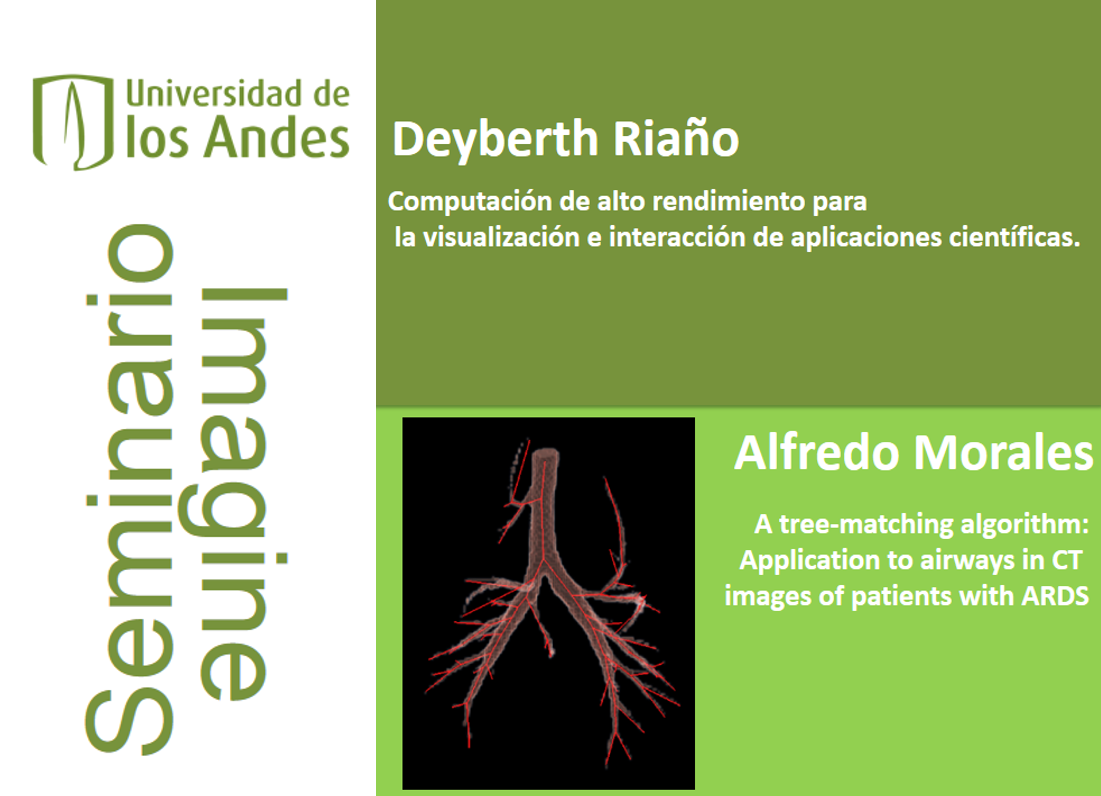
A tree-matching algorithm: Application to airways in CT images of patients with ARDS Por Alfredo Morales:
The Acute Respiratory Distress Syndrome is mainly characterized by hyperpermeability and inflammation of the lung parenchyma and has an estimated mortality around 40%. Its treatment uses mechanical ventilation to support the respiration process. However, it is estimated that 22% of the patients may have survived if an adapted ventilation had been applied. In order to understand the lung response to mechanical ventilation and to improve the set-up of ventilation parameters, the air distribution in the parenchyma must be obtained and analyzed. This analysis is done in computed tomography (CT) images acquired at multiple ventilation settings, which are essentially combinations of pressure and volume, and at end-inspiration and end-expiration. As the region of interest is the parenchyma, the airway tree must be consistently segmented in all the CT images and then removed from the aeration analysis. The airway segmentation from different images of the same subject may differ because of partial volume effect and noise and also due to changes that occur when ventilation parameters vary. These alterations include the change of the diameter and local contrast of the elastic airways, which make easier the segmentation of some bronchi. In order to avoid this variability, we propose a conservative approach, in which only the set of branches successfully segmented in all the analyzed images, this set is called the common tree, are removed from quantification. The main objective of this work is to find the common tree in a set of segmented airway trees using an appropriate tree-matching strategy. We present a new method based on dynamic programming, which can achieve a large proportion of successful matches and effectively cope with topological differences. The method presents a matching precision of 95% when evaluated by two trained observers.
Computación de alto rendimiento para la visualización e interacción de aplicaciones científicas. Por Deyberth Riaño:
Se presentará la propuesta a desarrollar dentro del contexto de la tesis "Computación de alto rendimiento para la visualización e interacción de aplicaciones científicas". Se presentarán los objetivos de la propuesta, algunos conceptos relacionados y los resultados esperados.
AGENDA
- 12:30pm – 12:40pm: Bienvenida y Refrigerio
- 12:40pm – 01:10pm: A tree-matching algorithm: Application to airways in CT images of patients with ARDS
- 1:10pm – 01:20pm: Preguntas, discusión y retroalimentación
- 1:20pm – 01:40pm: Computación de alto rendimiento para la visualización e interacción de aplicaciones científicas
- 1:40pm – 1:50pm: Preguntas, discusión y retroalimentación
Fecha: Lunes 20 de Abril 12:30pm a 1:50pm
Hora: 12:30 - 1:50 pm
Lugar: ML Auditorio C
Profesores:
- Pablo Figueroa
- Fernando De La Rosa
- Marcela Hernández
- José Tiberio Hernández
- Vanessa Pérez



